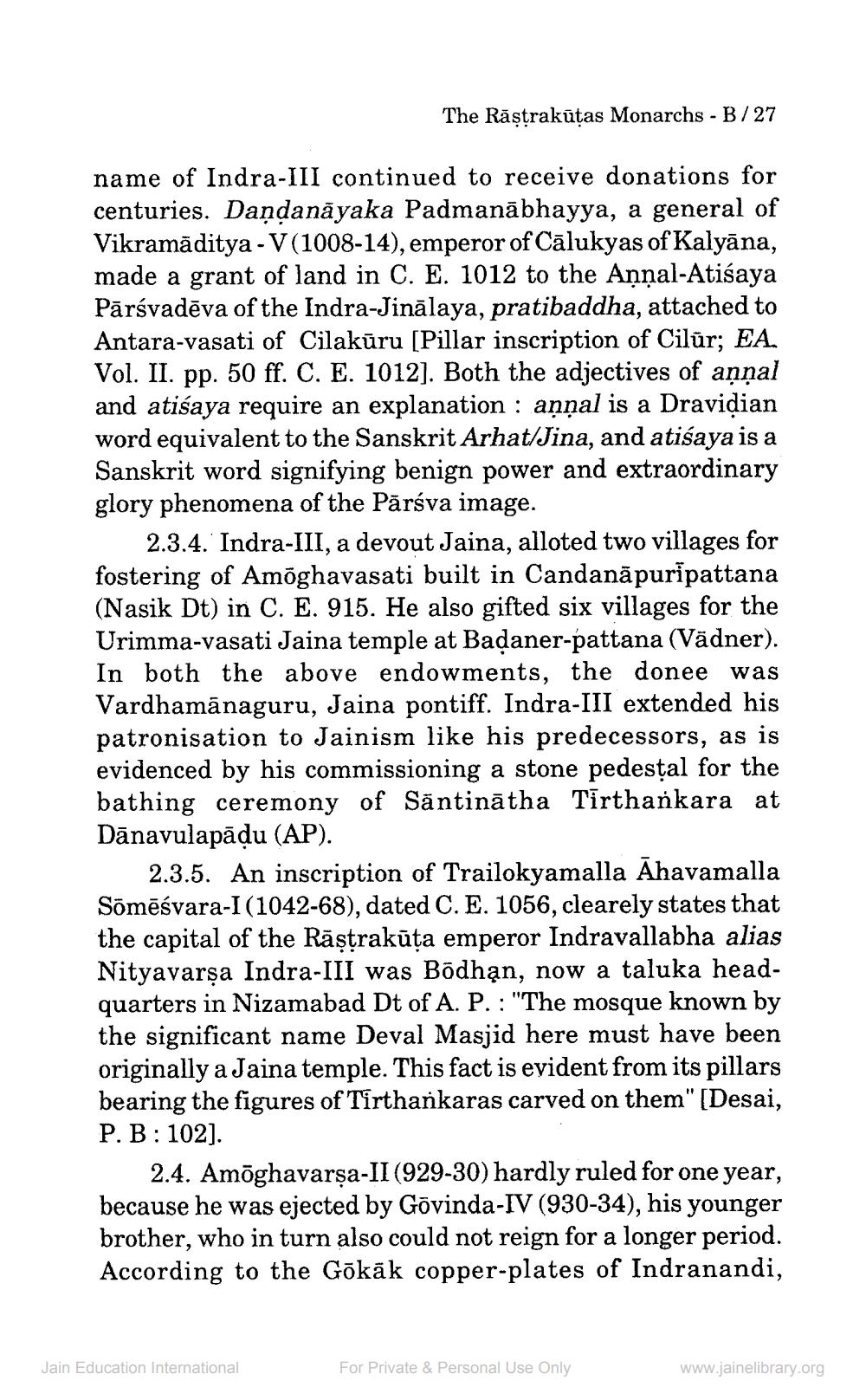________________
The Rāṣṭrakūtas Monarchs - B/27
name of Indra-III continued to receive donations for centuries. Danḍanāyaka Padmanābhayya, a general of Vikramaditya-V (1008-14), emperor of Calukyas of Kalyāna, made a grant of land in C. E. 1012 to the Annal-Atisaya Pārsvadeva of the Indra-Jinalaya, pratibaddha, attached to Antara-vasati of Cilakūru [Pillar inscription of Cilur; EA. Vol. II. pp. 50 ff. C. E. 1012]. Both the adjectives of annal and atisaya require an explanation: annal is a Dravidian word equivalent to the Sanskrit Arhat/Jina, and atiśaya is a Sanskrit word signifying benign power and extraordinary glory phenomena of the Parsva image.
2.3.4. Indra-III, a devout Jaina, alloted two villages for fostering of Amōghavasati built in Candanāpuripattana (Nasik Dt) in C. E. 915. He also gifted six villages for the Urimma-vasati Jaina temple at Baḍaner-pattana (Vädner). In both the above endowments, the donee was Vardhamanaguru, Jaina pontiff. Indra-III extended his patronisation to Jainism like his predecessors, as is evidenced by his commissioning a stone pedestal for the bathing ceremony of Santinatha Tirthankara at Danavulapāḍu (AP).
2.3.5. An inscription of Trailokyamalla Ahavamalla Sōmēśvara-I (1042-68), dated C. E. 1056, clearely states that the capital of the Räṣṭrakūṭa emperor Indravallabha alias Nityavarṣa Indra-III was Bodhan, now a taluka headquarters in Nizamabad Dt of A. P. : "The mosque known by the significant name Deval Masjid here must have been originally a Jaina temple. This fact is evident from its pillars bearing the figures of Tirthankaras carved on them" [Desai, P. B: 102].
2.4. Amōghavarṣa-II (929-30) hardly ruled for one year, because he was ejected by Govinda-IV (930-34), his younger brother, who in turn also could not reign for a longer period. According to the Gōkāk copper-plates of Indranandi,
Jain Education International
For Private & Personal Use Only
www.jainelibrary.org




